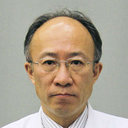Transformation to large cell neuroendocrine carcinoma as acquired resistance mechanism of EGFR tyrosine kinase inhibitor.
Słowa kluczowe
Abstrakcyjny
OBJECTIVE
Several different acquired resistance mechanisms to epidermal growth factor receptor (EGFR)-tyrosine kinase inhibitor (TKI) therapy have been described. Although rare, the transformation from adenocarcinoma to small cell carcinoma (SCLC) is one of these important mechanisms. We report a rare case that indicates transformation into large-cell neuroendocrine carcinoma (LCNEC) as an acquired resistance mechanism to EGFR-TKI therapy.
METHODS
The patient was a 68-year-old male with a diagnosis of cT2N2M0 pulmonary adenocarcinoma with L858R mutation on exon 21. He received lobectomy and underwent several courses of chemotherapies, including EGFR-TKIs, each time he relapsed. He finally relapsed with a mass that protruded into his left main bronchus. Resection of the metastatic site identified LCNEC that retained the original EGFR mutation. Immunohistochemistry revealed the loss of expression of EGFR and retinoblastoma (Rb) in the LCNEC.
CONCLUSIONS
This case highlights acquisition of EGFR-TKI resistance by transformation to LCNEC, not SCLC. Loss of EGFR and Rb expression in the LCNEC suggests the same mechanism as transformation to SCLC. Further study is needed to elucidate this mechanism, especially regarding the similarities and differences to SCLC.



